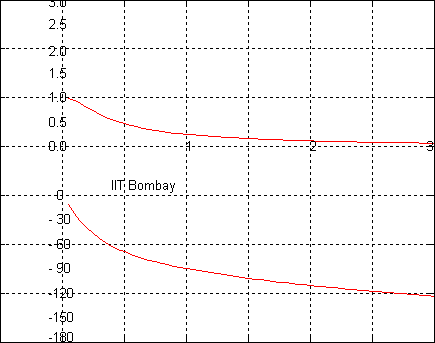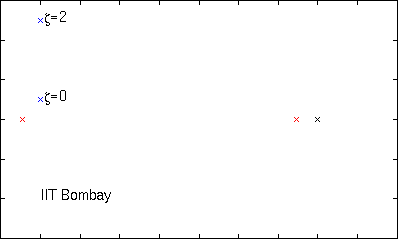The animated plot below shows the magnitude and phase of
the transfer function
plotted as a
function of the non-dimensional ratio
of
the input frequency
to
the natural frequency
for different values of the
damping ratio
.
The magnitude and
phase of the transfer function at the frequency
gives the
amplification and phase shift that a sinusoidal input of frequency
undergoes as it passes through the
system. In the magnitude plot, the non-dimensional
frequency ratio
takes values in the
range 0 to 3 while the
damping ratio
decreases from
2 to 0. The plots
corresponding to the values
,
,
1,
and
for the damping
ratio
are shown in red. The plot for
shows the frequency response of an undamped
system, while
corresponds to a critically
damped system. The values
correspond to an overdamped system, while
,
correspond to an
underdamped system. The
value
is the smallest value of damping ratio for
which the
system shows no amplification at any input frequency. The animated plot
on the right shows the movement of the poles of the system as the
damping ratio
varies.


The same information is also shown on the animated plot
below using a log scale for the frequency, which varies in the range . The magnitude is plotted in
decibels (1 decibel = 20 log
(magnitude)),
while the phase is plotted in degrees on a linear scale. Frequency
response information plotted in this fashion is referred to as a Bode
plot.
